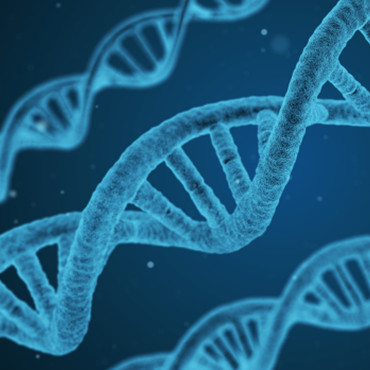You should understand how nucleic acid extraction kits work
Why should you understand how nucleic acid extraction kits work?
Spin columns contain a silica resin that selectively binds DNA and RNA depending on salt conditions and other factors affected by the extraction method. These nucleic acid extraction kits make the entire process easier and faster than older DNA isolation methods. However, the downside of using a kit is that it makes troubleshooting more difficult if you don't know what's in the kit's black box.
Therefore, in this article, the working principle of the nucleic acid kit and the operation of each step will be explained in detail.
1. RNA and DNA extraction:
Lysis:
The lysis formula may vary depending on whether you are extracting DNA or RNA, but the common denominator is a lysis buffer that contains high concentrations of chaotropic salts.
Effects of Chaotropes (chaotropic agents):
Chaotropes disrupt hydrogen bonds and hydrophobic interactions. Chaotropic salts include guanidine hydrochloride, guanidine thiocyanate, urea, and lithium perchlorate.
Detergents:
In addition to chaotropic agents, there is usually some detergent in the lysis buffer to aid in protein solubilization and lysis.
Lysozyme and Proteinase K:
Depending on the sample type, enzymes can also be used for lysis. Proteinase K is one of them, and actually works better in these denaturing buffers; as protein denaturation increases, the effect of proteinase K increases accordingly. However, lysozyme does not play a role in denaturation, so lysozyme treatment is usually performed before adding denaturing salts.

2. Notes on plasmid preparation
Isolation of plasmid DNA is not the same as extraction of RNA or genomic DNA because the plasmid must be separated from the genomic DNA. If at this moment, you add the chaotropic agent, everything will be released at once, and the small circular DNA cannot be distinguished from the high molecular weight chromosomes. Therefore, during plasmid preparation, the chaotropic agent is not added until after lysis, and the salt is used for binding.
3. Purification after DNA extraction: Binding DNA to a chromatographic column
The chaotropic salt is essential for lysis, but also for binding DNA (or RNA) to the column. In addition, alcohol is added to enhance and influence the binding of nucleic acids to silica.
Most of the time this is ethanol, but sometimes it can be isopropanol. Ethanol percentage and volume have a large effect. Too much and you'll bring in a lot of degraded nucleic acids and small species, which can affect A260 reads and reduce some of your yields. Too little and it may be difficult to wash all salts off the membrane.
If you use a detergent containing SDS in your lysis, try using NaCl as the precipitant to avoid contamination of DNA or RNA with the detergent.
4. Washing DNA (or RNA)
When the lysate is centrifuged through the silica membrane, the extracted DNA or RNA should now be bound to the column and impurities, cellular proteins and polysaccharides should have passed through.
However, the membrane is still soiled with residual cellular proteins and salts. If the sample is from a plant, there will still be polysaccharides, maybe some pigment left on the membrane, or if the sample is blood, the membrane may be stained brown or yellow.
Washing steps are used to remove these impurities. There are usually two washes, although this may vary by sample type. The first wash will usually contain a small amount of chaotropic salt to remove protein and colored contaminants. This is always followed by an ethanol wash to remove salts.
Ethanol washes are only required if starting preparations without large amounts of protein, such as plasmid preparation or PCR clean-up. The removal of chaotropic salts is essential to obtain high yield and purity of DNA or RNA. Some kits even wash the column twice with ethanol. If there is residual salt, the elution of nucleic acids will be poor, resulting in a low 260/230 ratio. For ethanol-free DNA and RNA, dry centrifugation is required, and most protocols have a centrifugation step to dry the column after the ethanol wash.
5. RNA and DNA extraction: elution
The remaining step in the DNA extraction protocol is to release pure DNA or RNA from the silica.
For DNA preparation using DNA extraction kits, 10 mM Tris at pH 8-9 is typically used. DNA is more stable at slightly alkaline pH and dissolves faster in buffers. This is true even for DNA particles. The pH of water tends to be low, as low as 4-5, and high molecular weight DNA may not be fully rehydrated within the short time period used for elution.
DNA elution can be maximized by allowing the buffer to sit in the membrane for a few minutes before centrifugation.
Since RNA is soluble in water, and RNA is favored in a slightly acidic pH environment.
Professional manufacturer of Nucleic Acid (DNA & RNA) Extraction and Analysis products supplier
GENETURE is a group company,we own two factories: Ascend and Dianrun,to provide one stop solution of Nucleic Acid Extraction and Analysis,including solution for COVID-19. Geneture provides high quality and professional Nucleic Acid Extraction Reagents, Lab consumables, Real-time PCR consumables and test machines.
GENETURE main products including: Nucleic acid extraction or purification kit,Automatic nucleic acid extractor, PCR system, PCR kit, Magnetic beads, and lab consumables of 96 well deep plate,Magnetic rod comb,PCR tube,PCR plate,Pipette tips,centrifuge tubes.
If you have any questions or any need for nucleic acid extraction kit, you are welcome to contact us at any time.
Email: info@geneture.com
Mobile: +86 150 1002 8687
